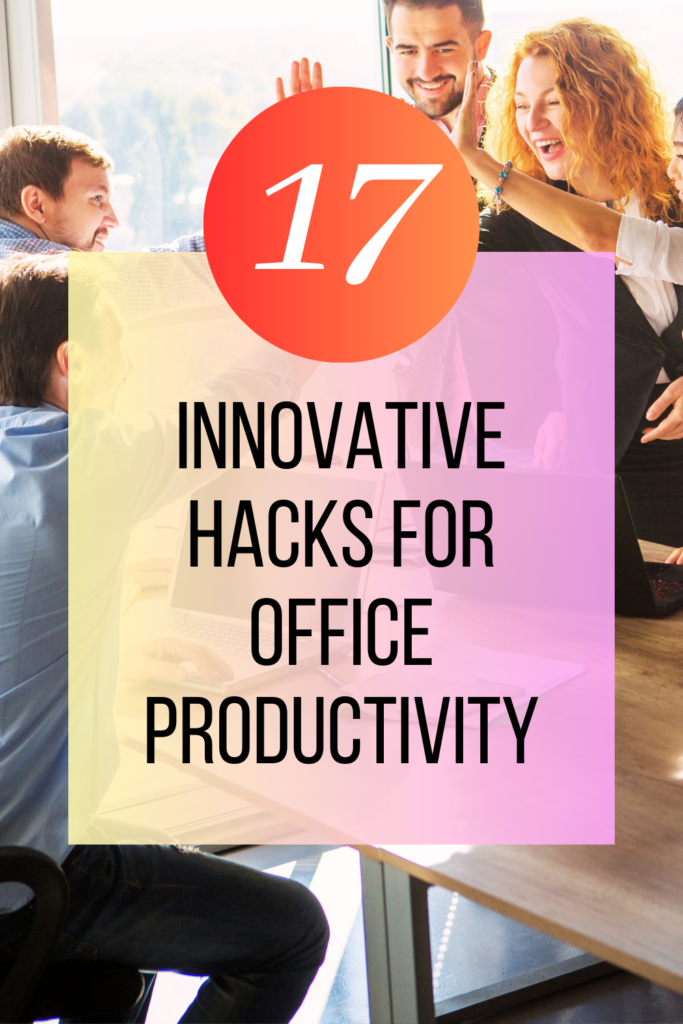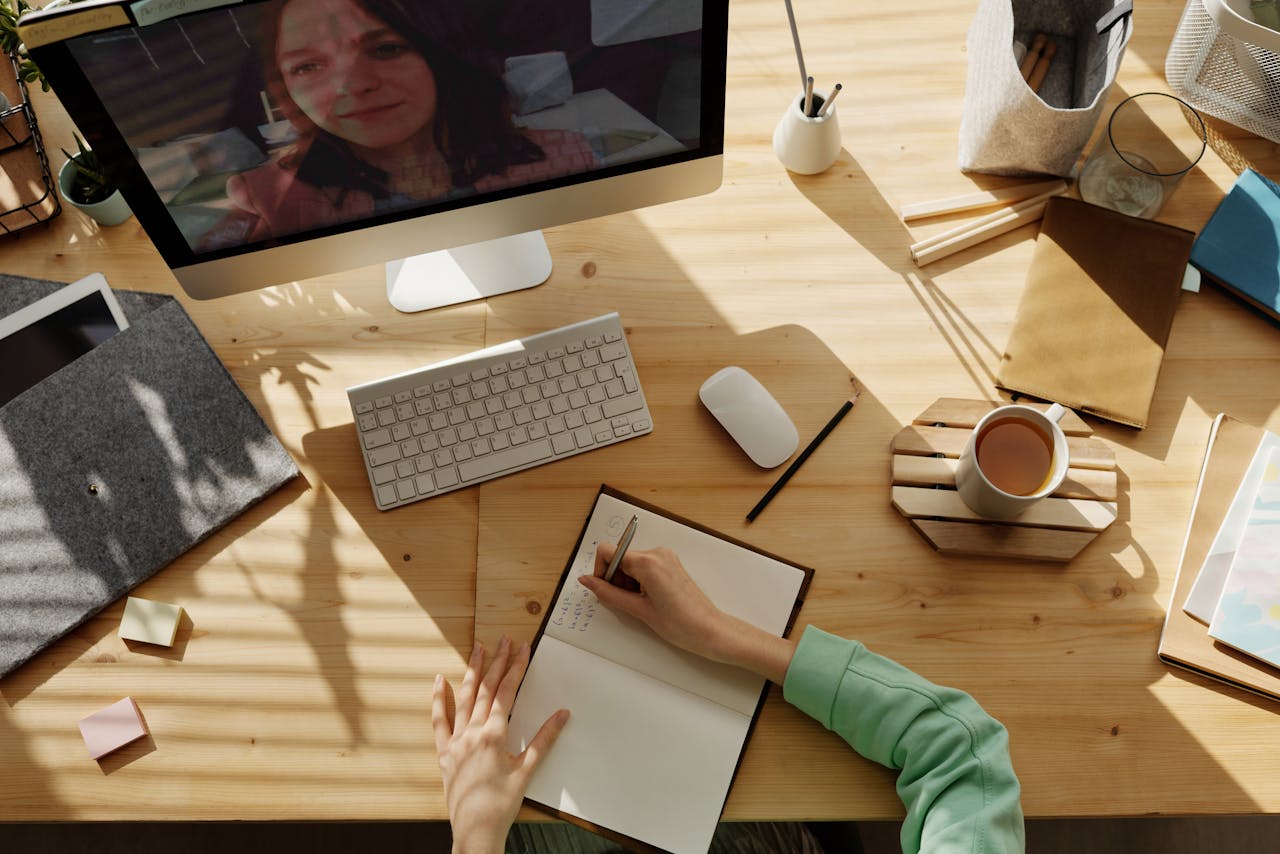We all know that staying productive at the office can sometimes feel like trying to catch smoke with your bare hands. Meetings, emails, and constant notifications can turn your day into a blur. But don’t worry, I’ve got 17 creative productivity hacks to help you thrive in the modern office. These tips are practical, engaging, and designed to keep you focused. Ready to transform your workday? Let’s dive in!

- 1. Embrace the Pomodoro Technique
- 2. Optimize Your Workspace for Comfort and Efficiency
- 3. Use Task Management Tools
- 4. Practice the Two-Minute Rule
- 5. Implement Time Blocking
- 6. Declutter Your Digital Space
- 7. Prioritize Your Most Important Tasks (MITs)
- 8. Take Regular Breaks to Recharge
- 9. Limit Meeting Times
- 10. Utilize the Power of "No"
- 11. Automate Repetitive Tasks
- 12. Create a Distraction-Free Zone
- 13. Batch Similar Tasks Together
- 14. Leverage Natural Light and Plants
- 15. Reflect and Adjust Weekly
- 16. Use White Noise or Music
- 17. Foster a Positive Work Culture
- Conclusion
1. Embrace the Pomodoro Technique
The Pomodoro Technique, developed by Francesco Cirillo, breaks work into 25-minute intervals, separated by short breaks. This method helps maintain focus and prevent burnout. Set a timer for 25 minutes, work intensively, then take a 5-minute break. After four cycles, take a longer break. This regular rhythm keeps motivation high and fatigue low.
In practice, you might find that the 25-minute burst allows you to dive deep into tasks without feeling overwhelmed. For instance, if you’re working on a report, the Pomodoro Technique can help you write uninterrupted, ensuring you get substantial work done without burning out.
2. Optimize Your Workspace for Comfort and Efficiency
A well-designed workspace can significantly boost productivity. Start with ergonomics: invest in a supportive chair and a desk at the right height to maintain good posture. Keep your workspace tidy—clutter can be a significant distraction. Only keep essentials within arm’s reach and personalize your space with items that inspire you, like plants or artwork, but avoid overloading it with knick-knacks.
An example of this might be setting up your desk near a window for natural light and placing a few plants around. These small changes can make your work environment more pleasant and conducive to productivity.
3. Use Task Management Tools
Applications like Trello, Asana, and Monday.com help organize your tasks and projects. These tools allow you to visualize your workflow, set deadlines, and collaborate with team members. By breaking down projects into smaller, manageable tasks, you can approach work systematically and avoid feeling overwhelmed.
For instance, if you’re managing a team project, using a tool like Asana can help assign tasks, set deadlines, and track progress, ensuring everyone is on the same page and work progresses smoothly.
4. Practice the Two-Minute Rule
David Allen, in his book “Getting Things Done,” popularized the Two-Minute Rule: if a task takes less than two minutes, do it immediately. This practice helps clear small tasks quickly, freeing up your mind and schedule for more substantial work. It also reduces the mental load of remembering to do these minor tasks later.
For example, if you receive an email that requires a quick response, handling it immediately can keep your inbox manageable and prevent small tasks from piling up.
5. Implement Time Blocking
Time blocking involves scheduling specific blocks of time for different tasks or activities throughout your day. By allocating dedicated time slots for particular tasks, you ensure that everything gets done without constantly switching between activities, which can be distracting and inefficient.
Imagine blocking 9 AM to 11 AM for deep work, such as writing or analysis, and 2 PM to 4 PM for meetings and collaborative tasks. This structure can help you manage your time more effectively and stay focused on the task at hand.
6. Declutter Your Digital Space
Just like your physical workspace, a tidy digital space can enhance productivity. Organize your files into folders, unsubscribe from unnecessary emails, and close unused browser tabs. Use tools like Evernote or Notion to keep your notes and ideas organized. A well-organized digital environment minimizes distractions and makes it easier to find what you need.
For instance, regularly cleaning up your desktop and organizing files into clearly labeled folders can save you time and reduce stress when looking for documents.
7. Prioritize Your Most Important Tasks (MITs)
At the beginning of each day, identify your three Most Important Tasks (MITs) that need to be accomplished. Focus on completing these tasks first before moving on to other less critical activities. This practice ensures that your most vital work gets done, even if unexpected events disrupt your day.
Consider starting your day by reviewing your goals and setting your MITs. This could involve critical project work, essential client communications, or strategic planning. By tackling these first, you ensure that you’re always moving forward on the most important fronts.
8. Take Regular Breaks to Recharge
Studies have shown that taking regular breaks can improve focus and productivity. Schedule short breaks throughout your day to relax and recharge. Use this time to stretch, walk around, or simply step away from your work. Breaks help clear your mind and reduce stress, making it easier to return to tasks with renewed energy.
For instance, you might follow a pattern of working for 50 minutes and then taking a 10-minute break. Use the break to get some fresh air, grab a coffee, or do a few stretches.
9. Limit Meeting Times
Meetings can be a significant productivity drain if not managed well. Set a clear agenda for each meeting and stick to it. Limit meetings to 30 minutes whenever possible and only invite necessary participants. Consider standing meetings, which tend to be shorter and more focused.
For example, if you have a weekly team meeting, create a clear agenda and share it in advance. This ensures that everyone knows what to expect and comes prepared, allowing the meeting to be more efficient.
10. Utilize the Power of “No”
Learning to say “no” is crucial for maintaining productivity. Politely decline tasks or projects that do not align with your priorities or goals. By doing so, you can focus your energy on the work that matters most, rather than spreading yourself too thin.
Imagine you’re asked to take on an additional project that doesn’t fit with your current workload or strategic objectives. Politely declining can help you stay focused on your existing commitments and deliver high-quality work.
11. Automate Repetitive Tasks
Identify repetitive tasks that can be automated and use tools to handle them. For instance, automate email sorting, calendar scheduling, and social media posting. Tools like Zapier and IFTTT can connect different apps and automate workflows, saving you time and reducing manual work.
For example, setting up an automated system to sort incoming emails into specific folders based on keywords can streamline your email management and free up time for more critical tasks.
12. Create a Distraction-Free Zone
Designate a part of your workspace as a distraction-free zone. In this area, eliminate potential interruptions like your phone, social media notifications, and unrelated browsing. By creating a focused environment, you can concentrate better and complete tasks more efficiently.
For instance, you might set up a specific corner of your office where you go to work on tasks requiring deep concentration, free from the usual distractions.
13. Batch Similar Tasks Together
Batching involves grouping similar tasks and completing them in one go. For example, set aside specific times to answer emails, make phone calls, or handle administrative tasks. Batching reduces the mental load of switching between different types of work and increases efficiency.
For example, you might allocate an hour each morning and afternoon for handling emails and calls, rather than dealing with them sporadically throughout the day.
14. Leverage Natural Light and Plants
Natural light can enhance mood and productivity. Position your desk near a window to take advantage of sunlight. Additionally, incorporating plants into your workspace can improve air quality and reduce stress. A greener workspace can lead to a more pleasant and productive work environment.
Consider rearranging your office layout to maximize natural light exposure and adding a few low-maintenance plants to your desk or shelves.
15. Reflect and Adjust Weekly
Set aside time each week to reflect on your accomplishments and challenges. Review what worked well and what didn’t, and adjust your strategies accordingly. This habit of regular reflection helps you stay aligned with your goals and continuously improve your productivity practices.
You might dedicate the last 30 minutes of your workweek to reviewing your progress, setting new goals, and planning your tasks for the following week.
16. Use White Noise or Music
For some people, background noise can help maintain focus. Experiment with white noise apps or productivity playlists to find what works best for you. Music with a steady rhythm, like classical or ambient tracks, can enhance concentration and make repetitive tasks more enjoyable.
Try using a white noise generator or a playlist of instrumental music to create a consistent and non-distracting background soundscape.
17. Foster a Positive Work Culture
A positive work culture encourages productivity and employee satisfaction. Promote open communication, recognize achievements, and encourage collaboration. When team members feel valued and supported, they are more likely to be engaged and productive.
For example, regular team-building activities and recognition programs can help build a sense of community and motivation within your team.
Conclusion
Incorporating these creative productivity hacks into your daily routine can lead to significant improvements in your work performance and overall job satisfaction. The key to productivity lies in working smarter, not harder. Implement these strategies to create a more efficient, enjoyable, and productive work environment. Start today—pick one hack, integrate it into your routine, and watch as your productivity and satisfaction soar.




